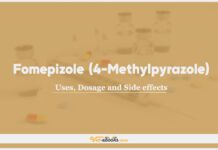Antivenoms for Dogs, Cats, and Horses: Dosage, Uses, and Side Effects Guide

Overview
Antivenom for dogs and cats is a critical veterinary antivenom used in the management of snakebite envenomation and spider bites across multiple species. This immunoglobulin preparation, raised against specific venom toxins, works by binding and neutralizing toxins through passive immunization. Most available antivenoms are derived from equine-derived immunoglobulins, which are effective but require monitoring for allergic responses.
Veterinary antivenom is indicated for bites from the European adder, rattlesnakes (pit vipers), coral snakes, and black widow spiders. The success of antivenom treatment is greatest when administered within 4–6 hours of systemic envenomation in animals, although delayed administration may still benefit cases with ongoing systemic symptoms. Early intervention is especially important in severe black widow envenomation in cats and snakebite treatment in dogs to reduce complications and improve outcomes.
Uses of Antivenom
- European Adder (Vipera berus) Bites – Dogs and Cats: Veterinary antivenom is used to treat adder snakebite envenomation in dogs and cats, helping to control swelling and systemic toxicity. Early use of antivenom for dogs offers the best outcomes, especially within 24 hours of the bite.
- Black Widow Spider (Latrodectus mactans) Envenomation – Dogs and Cats: Black widow antivenom for cats and dogs is used in severe cases to neutralize neurotoxins, reducing muscle spasms, severe pain, and cardiovascular effects. Cats are highly sensitive to black widow envenomation, making early antivenom administration critical.
- North American Pit Viper Envenomation (Crotalidae) – Dogs, Cats, Horses: Antivenom for pit viper bites, such as rattlesnakes and copperheads, is used in snakebite treatment in dogs and other animals. It neutralizes venom, helps reverse coagulopathy, and mitigates systemic signs of envenomation.
- Coral Snake Envenomation (Micrurus spp.) – Dogs, Cats, Horses: Coral snake antivenom for animals is indicated for bites by Eastern and Texas coral snakes. It prevents or treats neurotoxicity, respiratory distress, and hemolysis, particularly in small animal practice.
Dosage of Antivenom
Accurate dosing of veterinary antivenom is critical for effective treatment of snake bites and spider envenomation in animals. The following antivenom doses are tailored for specific species and venom types. Always monitor patients closely for hypersensitivity reactions, particularly when using antivenom for dogs, cats, or horses.
Antivenom Dosing in Dogs and Cats
- European Adder Bite: Administer 10 mL of adder antivenom slow IV per animal. A test dose of 0.5 mL IV over 5 minutes is advised to detect allergic responses. Wait 20 minutes before giving the full dose.
- Black Widow Spider Envenomation: Reconstitute 1 vial of antivenom in 100–200 mL saline. Infuse IV over 30 min to 6 hours. Premedicate with diphenhydramine 0.5–1 mg/kg SC. Monitor closely during infusion.
- Pit Viper Bite: Use 1–2 vials of pit viper antivenom diluted in 100–250 mL saline. Start with 1–2 mL IV slowly over 5 min. If no reaction, continue infusion over 30–60 min. Repeat as needed.
- Coral Snake Bite: 1–2 vials diluted in 100–250 mL saline. Begin with 1–2 mL IV over 3–5 min, observe for allergic reactions, then complete infusion slowly based on size and condition.
Antivenom Dosing in Horses
- Pit Viper Envenomation: Administer 1–2 vials diluted in 250–500 mL saline or lactated Ringer’s. Infuse IV over 20–60 minutes. Use only when systemic signs are present.
- Coral Snake Bite: Provide 1–2 vials IV in 250–500 mL saline. Monitor for respiratory and cardiovascular effects during treatment.
⚠️ Dosing Guidelines for Veterinary Antivenom
- Start all infusions slowly and watch for adverse effects like anaphylaxis, facial swelling, or breathing difficulties.
- Repeat doses may be necessary based on severity of envenomation, body weight, and clinical response.
- For snakebite treatment in dogs or exotic species, consult a veterinary poison control center for individualized dosing recommendations.
Drug Dosage Calculator
You Should Give:
Side Effects of Antivenoms
- All Veterinary Antivenoms: Hypersensitivity reactions may occur due to equine or ovine serum origins. These side effects of antivenom for animals include:
- Anaphylaxis (rare but potentially life-threatening, especially with equine-derived veterinary antivenom)
- Delayed serum sickness (fever, rash, muscle/joint pain 1–2 weeks post-treatment)
- Mild reactions: Facial swelling, excessive panting, or unproductive cough in dogs or cats
- Adder Antivenom Side Effects (Dogs & Cats): Facial swelling not related to bite site, panting, and coughing episodes have been noted after adder antivenom administration.
- Black Widow Spider Antivenom: Severe allergic reactions can occur in sensitive animals, especially cats. Muscle cramps may follow infusion. Premedication with diphenhydramine is advised when using black widow antivenom for dogs and cats.
- Pit Viper Antivenom: Type I hypersensitivity (urticaria, vomiting, diarrhea, dyspnea) more likely with fast IV infusion. Serum sickness may develop 1–2 weeks later. Other rare adverse effects include hypocalcemia, GI upset, and changes in blood pressure or heart rate.
- Coral Snake Antivenom: Risk of anaphylaxis exists. Use of opioids may mask early signs of allergic reaction. Serum sickness is possible, especially with equine-derived antivenom products for coral snake bites.
Contraindications of Antivenoms
- General Precautions (All Veterinary Antivenoms):
- Use all antivenom for animals cautiously in those with known hypersensitivity to equine or ovine serum proteins.
- Do not administer veterinary antivenom prophylactically if snakebite envenomation is uncertain or unconfirmed.
- Monitor animals closely during IV infusion for signs of anaphylaxis (e.g., facial swelling, dyspnea, or hyperemia of the ear pinnae).
- Avoid combining antivenom for dogs and cats with opioids or sedatives in cases of neurotoxic envenomation (e.g., coral snake bites), as these may worsen respiratory compromise.
- European Adder Antivenom (Dogs & Cats):
- No specific contraindications reported. A slow test dose (0.5 mL IV) may help assess hypersensitivity before full administration.
- Black Widow Spider Antivenom:
- Rapid IV fluid administration is contraindicated due to risk of hypertension related to envenomation effects.
- Sensitivity testing may yield false results; interpret with caution when using black widow antivenom for cats and dogs.
- Pit Viper Antivenom (Dogs, Cats, Horses):
- Do not inject antivenom at or near the snakebite site; systemic IV use is preferred.
- Equine-derived pit viper antivenom should be administered with caution and premedication using diphenhydramine is advisable.
- Coral Snake Antivenom:
- Not effective against bites from Micruroides euryxanthus (Sonoran/Arizona coral snake).
- Start with a slow IV infusion (1–2 mL) to assess for allergic response before giving the full coral snake antivenom dose.
Important Notes
- Availability and Importation of Veterinary Antivenom:
- In the UK, check current approved suppliers for antivenom for animals via the VMD website.
- A special dispensation from the VMD allows emergency veterinary antivenom use before STC approval—contact the VMD directly for urgent cases.
- Always confirm product availability and supply quantities with manufacturers before applying for antivenom importation.
- Emergency supply may be possible through the VPIS ToxBox service in the UK, especially for snakebite antivenom for dogs and cats.
- Timing of Antivenom Administration for Dogs and Cats:
- Greatest efficacy is achieved when veterinary antivenom is administered within 4–6 hours of envenomation (especially for systemic effects).
- For local swelling due to snakebite, benefits are minimal if given after 24 hours.
- In cases of systemic envenomation, delayed administration may still be beneficial even beyond 24 hours.
- Recovery Time in Animals:
- Currently, no veterinary studies conclusively prove that antivenom for small animals speeds recovery time following envenomation.
- Veterinary clinical judgment is essential. Supportive care remains crucial, regardless of antivenom availability or use.
- Species-Specific Effectiveness:
- Veterinary antivenom is species-specific; for instance, adder antivenom will not neutralize black widow spider venom or pit viper envenomation in dogs or cats.
- Always consult with a veterinary poison control center or a specialist when managing bites from exotic or non-native species, as appropriate antivenom may not be readily available.
Frequently Asked Questions
Is antivenom always required for snake bites in dogs and cats?
No. Not all envenomations require antivenom. For mild cases or uncertain bites, supportive care may suffice. However, antivenom is recommended in moderate to severe envenomations, especially when systemic signs are present.
How soon should antivenom be administered for best results?
Within 4–6 hours post-bite offers the best efficacy, particularly for systemic effects. Administering beyond 24 hours may still help manage systemic signs but has limited value for reducing local swelling.
Can I use one type of antivenom for all snake bites?
No. Antivenoms are species-specific. For example, European Adder antivenom will not neutralize Coral Snake venom. Always use the appropriate antivenom or consult a veterinary poison control center if unsure.
Are there risks with antivenom administration?
Yes. Risks include anaphylaxis and delayed serum sickness. Premedication with diphenhydramine is often recommended. Emergency drugs (e.g., epinephrine) must be available during administration.
Where can veterinarians obtain antivenom in emergencies?
In the UK, check the VMD website for approved suppliers. Urgent supply may be available via the VPIS ToxBox service. Contact manufacturers in advance to confirm product availability.
Do You Want To Increase Your Veterinary Knowledge and Practical Skills?
You Can Now Browse and Download +3000 Books For Veterinary Professionals & Students Online.
Download Veterinary Books




















